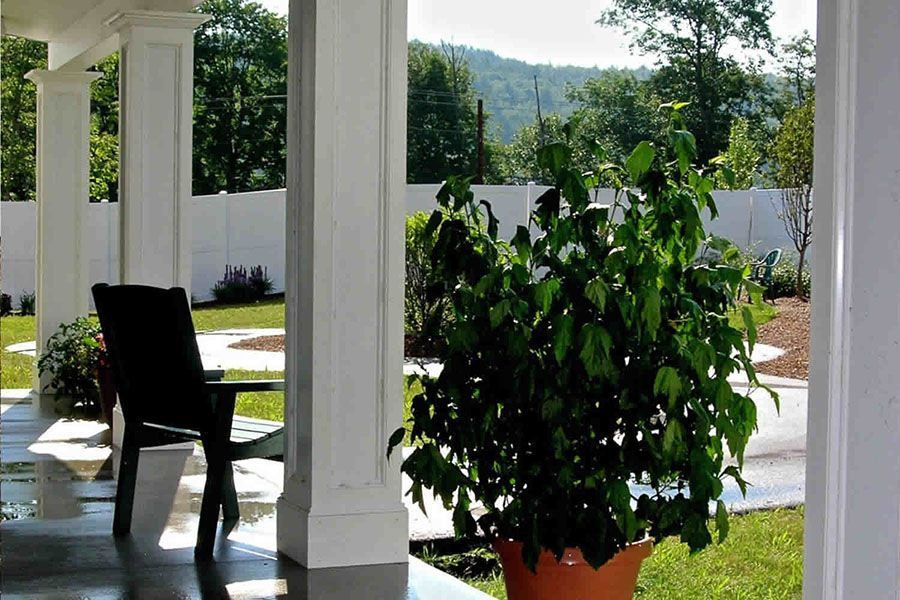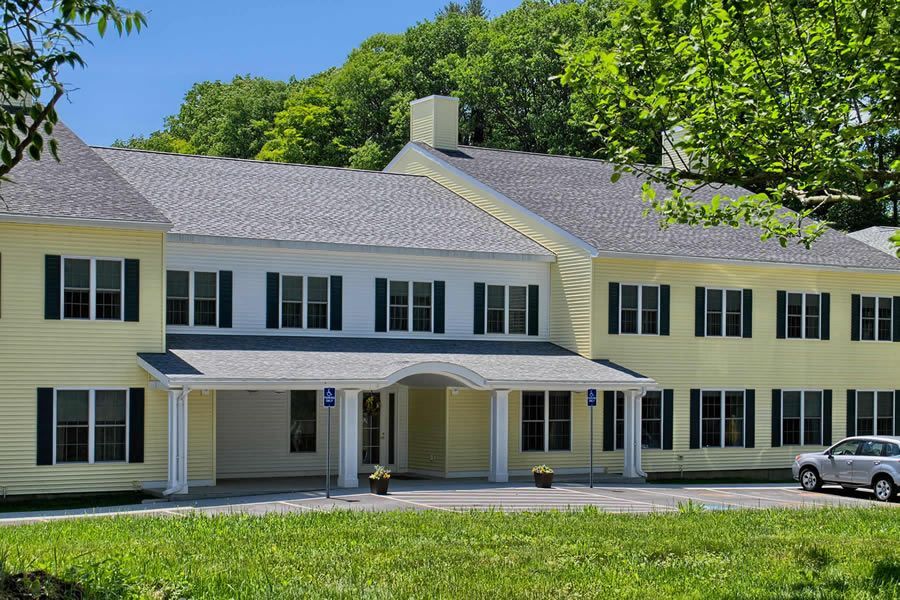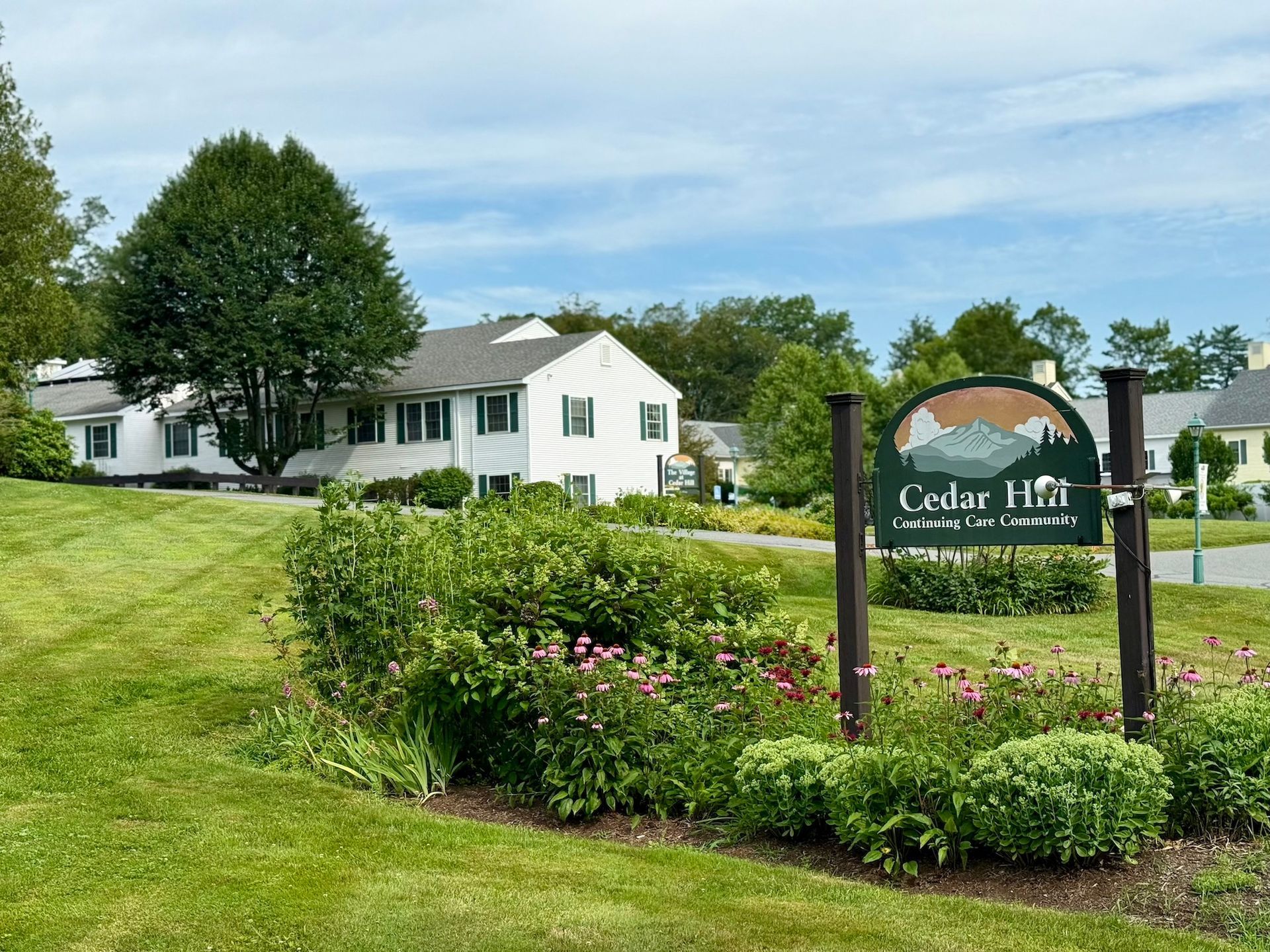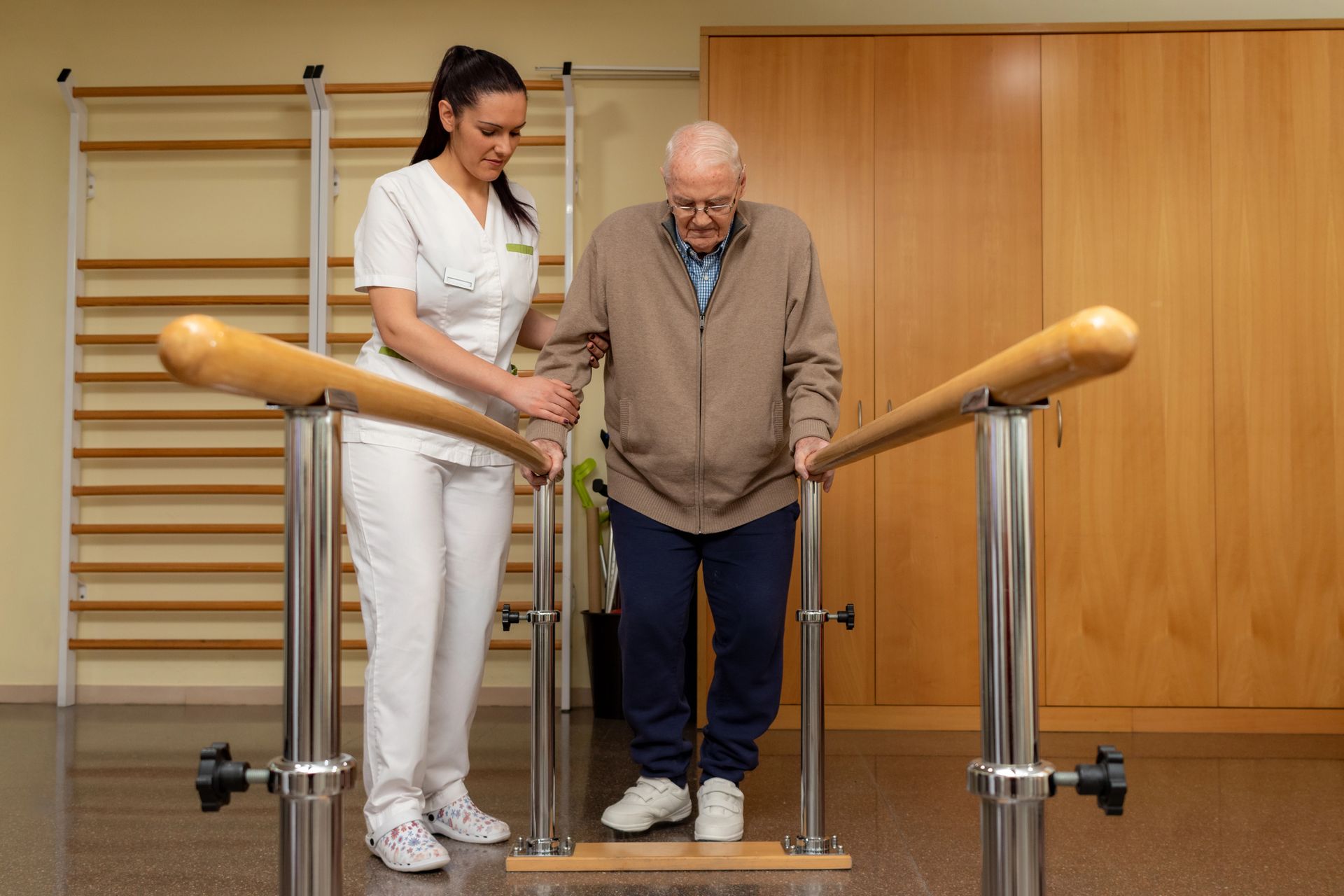Assisted Living vs SNF: Understanding the Key Differences for Senior Care
Making care decisions for an aging loved one can feel overwhelming, especially when navigating the differences between assisted living vs SNF options. With healthcare needs constantly evolving and costs continuing to rise, families need clear guidance to make informed choices that prioritize both quality of care and quality of life.
At Cedar Hill Continuing Care Community and the Village at Cedar Hill in Windsor, Vermont, we understand these challenges intimately. As a continuing care retirement community, we’ve helped countless families navigate transitions between different levels of care, from independent living through skilled nursing services. This comprehensive guide will help you understand the fundamental differences between assisted living and skilled nursing facilities, empowering you to make the best decision for your loved one’s unique needs.
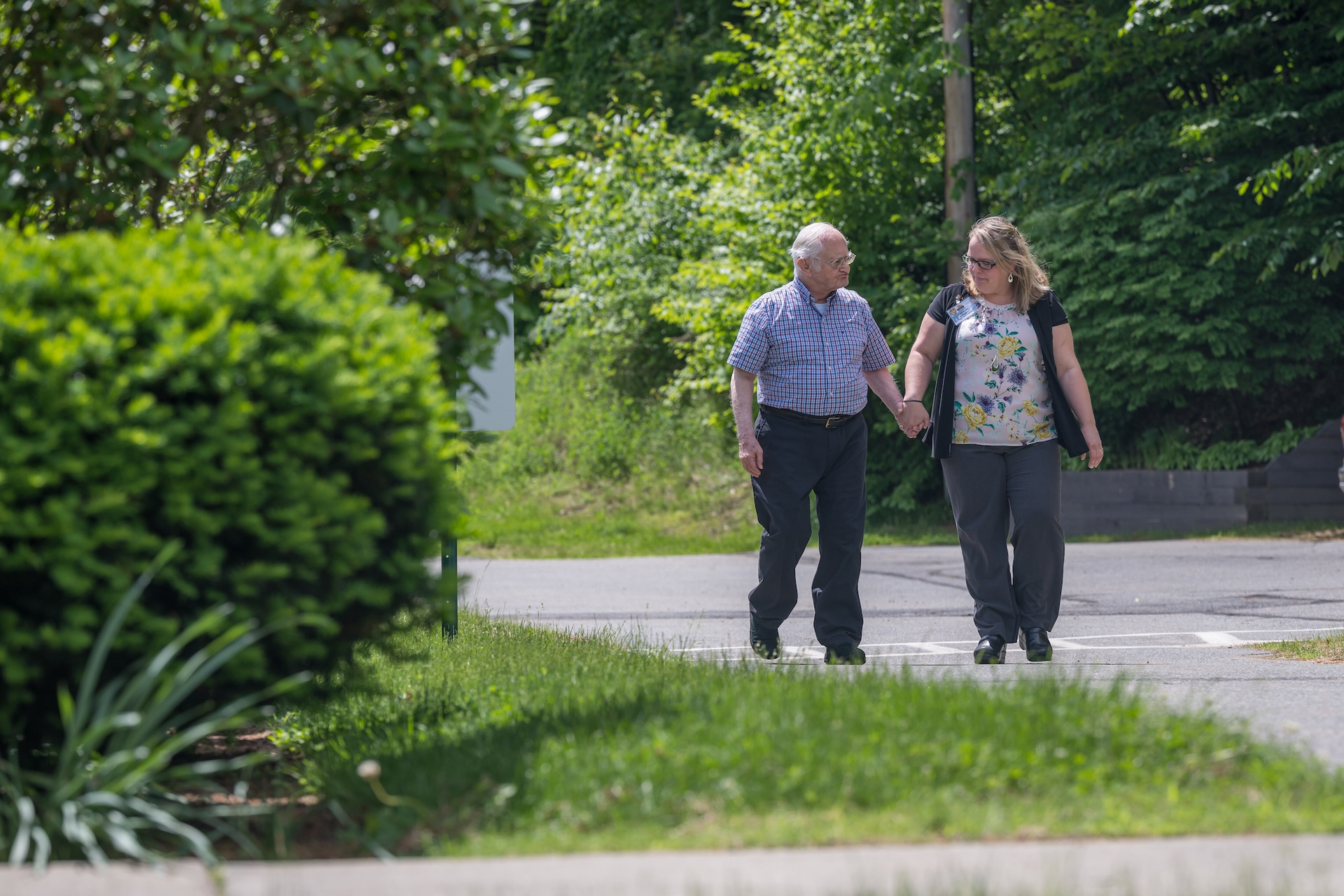
What is the Difference Between Assisted Living and SNF?
The primary distinction between assisted living vs SNF lies in the medical intensity of care provided. A skilled nursing facility serves as a licensed medical establishment offering 24/7 nursing care delivered by registered nurses and licensed practical nurses, all overseen by physicians. These facilities primarily serve individuals with complex medical needs requiring constant supervision, such as those needing frequent monitoring, IV therapies, advanced wound care, or rehabilitation following surgery.
Assisted living communities, in contrast, focus on residential living that promotes independence while providing support with activities of daily living. Residents in assisted living facilities typically maintain stable health conditions and don’t require round-the-clock clinical supervision. While licensed nurses are available for scheduled medical support, the environment emphasizes autonomy and social engagement rather than intensive medical intervention.
The healthcare professionals at skilled nursing care facilities manage patients who are not stable enough to live independently, whereas assisted living residents generally need only selective assistance with tasks like medication management, bathing, or meal preparation. This fundamental difference in medical support drives many other distinctions between these care options.
Understanding Assisted Living Communities
Assisted living facilities provide apartment-style living arrangements designed to maintain dignity and independence. Most assisted living facilities offer private or semi-private units that residents can personalize with their own furniture and belongings, creating a true home environment rather than an institutional setting.
Personal Care Services in Assisted Living
Assisted living communities provide comprehensive support with activities of daily living, including:
- Bathing, grooming, dressing, and toileting assistance
- Medication management and reminders from trained medical professionals
- Mobility support and ambulation assistance
- Basic health monitoring during scheduled check-ins
The registered nurse on staff typically works standard hours rather than providing 24/7 coverage, focusing on wellness coordination and basic medical needs management. This approach allows assisted living residents to maintain control over their daily schedules while receiving necessary support.
Lifestyle and Amenities
Assisted living communities offer extensive recreational and social programming designed to promote a healthy social environment. Residents can participate in organized activities, attend religious services, enjoy up to three meals daily in communal dining rooms, and access transportation for shopping and appointments.
The maintenance free lifestyle includes housekeeping and laundry services, allowing residents to focus on relationships and personal interests. Many assisted living communities provide specialized memory care units for residents with dementia-related conditions, though these typically serve those in earlier stages who don’t require extensive medical care.

Understanding Skilled Nursing Facilities (SNF)
Skilled nursing facilities operate as medical environments providing intensive, round-the-clock care. These nursing homes maintain clinical settings similar to hospital environments, with medical equipment readily accessible and continuous monitoring capabilities.
Medical Services and Staffing
Skilled nursing communities employ registered nurses at least eight hours daily, with licensed practical nurses and certified nursing aides maintaining 24/7 coverage. This robust staffing enables skilled nursing care that includes:
- Complex wound care and post-surgical monitoring
- IV medication administration and specialized therapies
- Rehabilitation services including physical therapy, occupational therapy, and speech therapy
- Management of chronic medical conditions and debilitating physical illnesses
- Ongoing medical care coordination with physicians and medical professionals
The clinical environment prioritizes medical stability and safety over personalization, with private rooms often containing medical equipment and monitoring devices necessary for ongoing medical care.
Rehabilitation and Recovery Focus
Many residents enter skilled nursing facilities following hospitalization, requiring daily therapy services and intensive rehabilitation. The goal often involves preparing residents to return to lower levels of care or independent living, though some individuals require permanent placement due to complex medical needs.
Level of Care Comparison: Assisted Living vs SNF
| Aspect | Assisted Living | Skilled Nursing Facility |
|---|---|---|
| Medical Supervision | Scheduled nurse visits | 24/7 licensed nurses on duty |
| Care Focus | Independence with support | Medical stability and treatment |
| Medication Management | Reminders and basic administration | Complex medication regimens, IV therapy |
| Rehabilitation | Limited, mostly wellness-focused | Comprehensive daily therapy services |
| Environment | Home-like, apartment style | Clinical, hospital-like |
| Privacy | Private/semi-private apartments | Shared rooms common, less privacy |
The level of medical assistance required determines appropriate placement between these options. Assisted living care focuses on maintaining independence while providing support, whereas skilled nursing provides intensive medical intervention for those with unstable or complex health conditions.
Skilled nursing residents typically require ongoing medical care that assisted living facilities cannot safely provide. This includes management of chronic medical conditions requiring frequent monitoring, complex wound care, or recovery from acute medical events.
Cost Analysis: Assisted Living vs SNF
Understanding the financial implications of assisted living vs SNF options requires examining both base costs and additional service fees. According to 2024 national averages, these living facilities show significant cost differences reflecting their varying levels of care intensity.
2024 Cost Breakdown
Assisted Living Community Costs:
- Private apartments typically cost more than semi-private options
- Additional services (extra personal care, specialized memory care) increase monthly fees
- Regional variations can cost more monthly in high-cost areas like Vermont
Skilled Nursing Facility Costs:
- Private room premiums will cost more monthly over semi-private accommodations
- Intensive medical services and 24/7 staffing drive higher costs
- Rehabilitation services and specialized care may incur additional charges
The higher costs in skilled nursing care facilities reflect the intensive medical staffing requirements, specialized equipment, and comprehensive healthcare services provided around the clock.
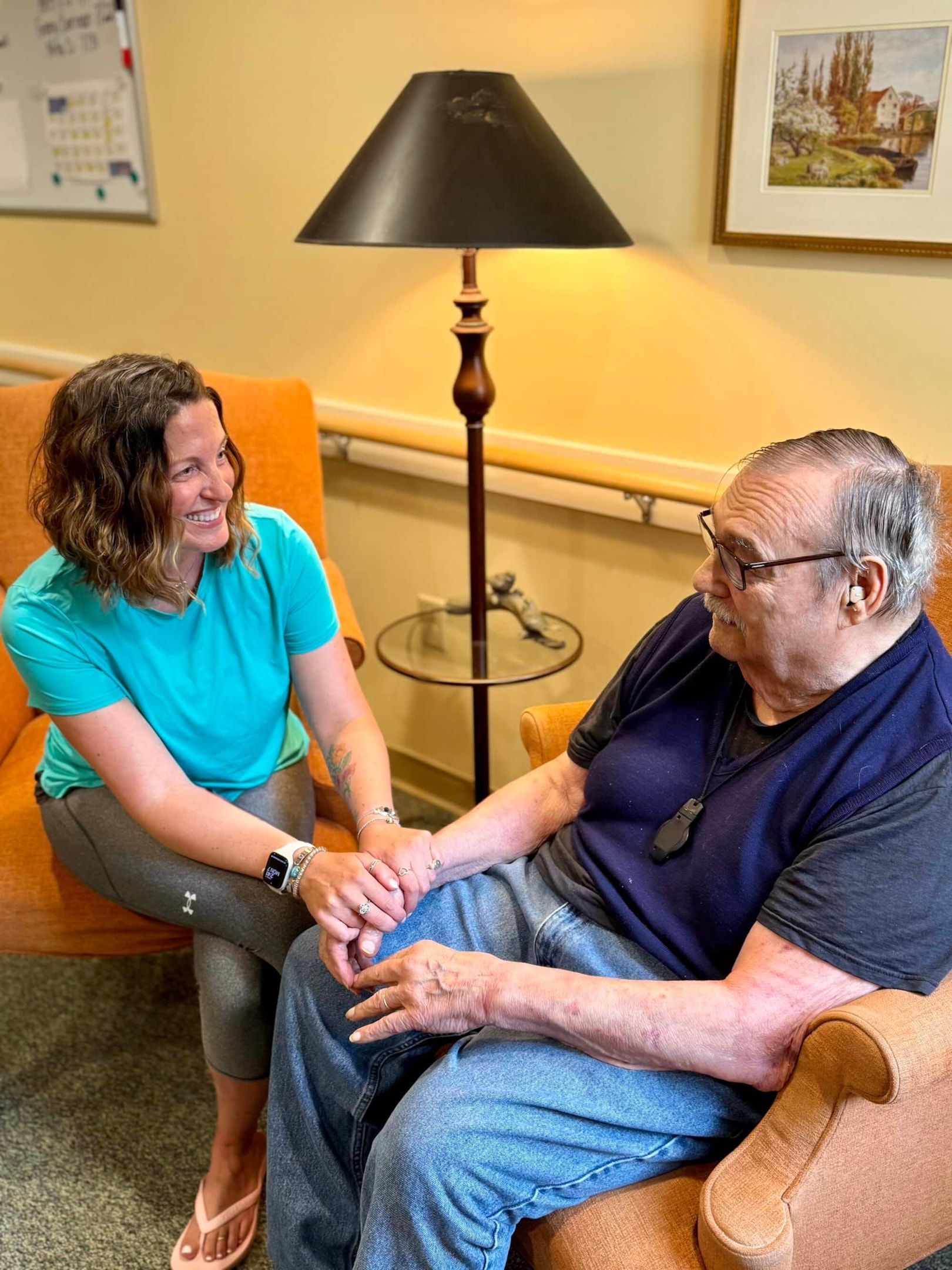
Insurance Coverage and Payment Options
Navigating payment options for assisted living vs SNF requires understanding each care level’s insurance eligibility and coverage limitations.
Medicare Coverage
Medicare coverage varies dramatically between these care options:
- Skilled Nursing Facilities: Medicare covers up to 100 days following a qualifying 3-day hospital stay, with specific co-payment requirements and medical necessity criteria
- Assisted Living: Medicare does not cover assisted living expenses, as these are considered non-medical custodial care services
Medicaid and Other Payment Sources
Medicaid services may cover skilled nursing facility costs for eligible individuals meeting both financial and health requirements. However, Medicaid coverage for assisted living remains limited and highly state-dependent, with some states offering waiver programs for personal care services.
Long-term care insurance policies may provide partial coverage for both assisted living services and skilled nursing care, though reimbursement depends on specific plan terms and care requirements. Veterans benefits through the VA Aid and Attendance program can help eligible veterans with expenses in both settings.
Most assisted living communities rely primarily on private pay arrangements, making financial planning crucial for families considering this option.
Admission Criteria and Assessment Process
The admission process differs significantly between assisted living vs SNF placements, reflecting their distinct care philosophies and regulatory requirements.
Assisted Living Assessment
Assisted living assessments focus on functional evaluation, examining how much assistance prospective residents need with daily living activities. The evaluation process considers:
- Current ability to perform activities of daily living independently
- Cognitive status and safety awareness
- Medication management capabilities
- Social engagement needs and preferences
- Stability of current health conditions
Candidates with complex nursing needs, severe behavioral issues, or requirements for extensive medical care typically cannot be accommodated in most assisted living facilities.
Skilled Nursing Facility Admission
Skilled nursing facility admission requires physician orders and documented medical necessity, usually following acute medical events. The comprehensive evaluation establishes:
- Clinical care requirements and medical complexity
- Rehabilitation potential and therapy needs
- Medication regimens and nursing interventions required
- Family support systems and discharge planning goals
- Skilled facilities vary on the type of admissions they accept. For instance, some are equipped to handle wandering residents while others may not be designed for such a resident.
Hospital discharge planners often coordinate SNF placements, with Medicare or insurance coverage requirements driving much of the admission timeline and documentation process.
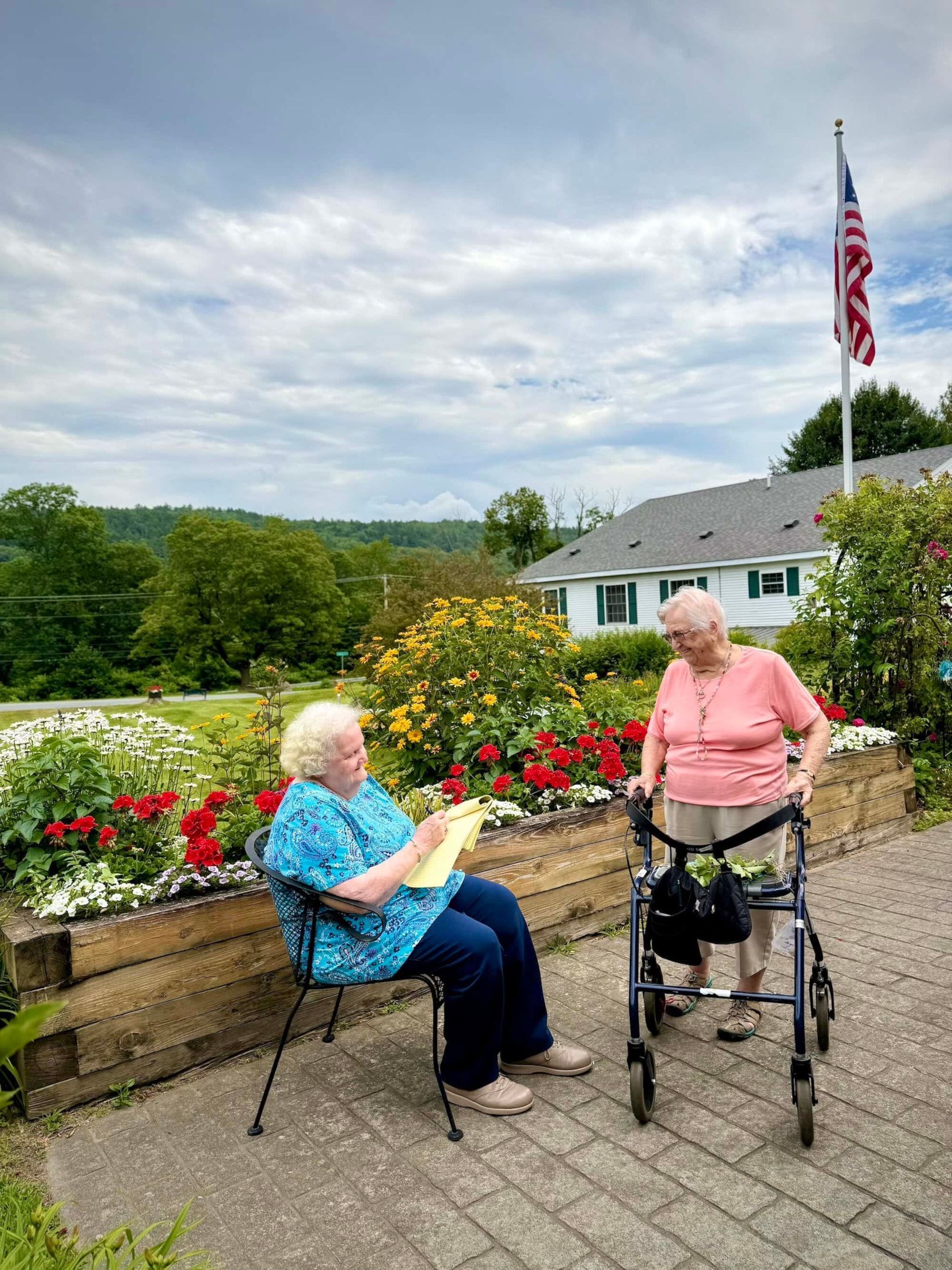
Who Benefits from Each Type of Care?
Understanding which individuals thrive in assisted living versus skilled nursing environments helps families make appropriate care decisions for their specific circumstances.
Ideal Assisted Living Candidates
Assisted living residents typically benefit most when they:
- Need moderate help with activities of daily living but maintain overall independence
- Have stable chronic medical conditions manageable with basic medical support
- Value social engagement and community participation
- Prefer a home-like environment with privacy and personalization options
- Can participate in emergency evacuation procedures with minimal assistance
Many residents in assisted living facilities manage conditions like controlled diabetes, mild heart disease, or early-stage memory loss while maintaining active, engaged lifestyles.
Appropriate Skilled Nursing Candidates
Skilled nursing care suits individuals who:
- Require intensive medical management following surgery, stroke, or serious illness
- Need complex medication administration or medical procedures
- Benefit from comprehensive rehabilitation services
- Have unstable medical conditions requiring frequent monitoring
- Cannot safely manage daily activities without constant supervision
The specialized care available in skilled nursing communities serves those with advanced chronic conditions, recent hospitalizations, or complex care coordination needs that exceed assisted living capabilities.

Transitioning Between Care Levels
One of the greatest advantages of continuing care retirement communities like Cedar Hill lies in our ability to provide seamless transitions, in most cases, between care levels, as needs evolve. This continuity eliminates the stress of relocating to unfamiliar environments during health crises.
The CCRC Advantage
Continuing care retirement communities offer unique benefits for managing care transitions:
- Residents can move between independent living, assisted living, and skilled nursing without leaving familiar surroundings
- Established relationships with care teams ease adjustment periods
- Family members maintain consistent contact points and visiting routines
- Care coordination improves through integrated medical records and communication systems
Planning for Care Changes
Effective transition planning involves regular assessments with healthcare professionals, family meetings to discuss changing needs, and proactive communication with care coordinators. At Cedar Hill, our interdisciplinary teams work closely with residents and families to anticipate needs and plan appropriate transitions before crises occur.
Many residents begin in our assisted living community and transition to skilled nursing temporarily for rehabilitation, then return to assisted living or independent living as they recover. This flexibility provides security for both residents and families, knowing appropriate care will always be available.
Making the Right Choice: Decision Factors
Selecting between assisted living vs SNF requires careful evaluation of multiple factors beyond immediate care needs. Families should consider both current circumstances and potential future requirements when making these important decisions.
Assessment Considerations
Medical Needs Evaluation:
- Current stability of health conditions
- Complexity of medication regimens
- Need for medical monitoring or interventions
- Rehabilitation requirements following hospitalization
Functional Capacity:
- Ability to perform activities of daily living independently
- Cognitive status and safety awareness
- Mobility and fall risk assessment
- Social engagement preferences and capabilities
Financial Planning:
- Available resources for monthly costs
- Insurance coverage and benefit eligibility
- Long-term financial sustainability
- Geographic preferences and family proximity
Professional Guidance
Consulting with physicians, geriatric care managers, and facility care teams provides essential insight for matching individual needs to appropriate services. At Cedar Hill, our care advisors conduct thorough assessments and provide honest recommendations about the most suitable care level for each prospective resident.
Trial stays or respite care programs offer valuable opportunities for families to experience different care environments before making permanent decisions. These short-term arrangements help identify preferences and comfort levels while reducing decision-making pressure.

Why Choose Cedar Hill for Your Care Journey
As Vermont’s premier continuing care retirement community, Cedar Hill Continuing Care Community and the Village at Cedar Hill provide the unique advantage of offering the full spectrum of senior care options on a single, beautiful campus in Windsor. Our comprehensive approach eliminates the uncertainty and stress typically associated with care transitions.
Our Continuum of Care
Our residents benefit from:
- Independent Living: Active lifestyle with optional services and peace of mind
- Assisted Living: Personalized support maintaining dignity and independence
- Skilled Nursing: 24/7 medical care with rehabilitation services and memory care
- Seamless Transitions: Moving between care levels without relocating or changing communities
Expert Care Coordination
Our experienced team includes registered nurses, licensed practical nurses, certified nursing aides, and specialized therapists who work collaboratively to ensure optimal outcomes. We maintain strong relationships with local medical professionals and healthcare providers, creating comprehensive support networks for our residents.
The decision between assisted living vs SNF doesn’t have to be permanent or stressful when you choose a continuing care retirement community. At Cedar Hill, we’re committed to adapting our services to meet evolving needs while maintaining the highest standards of care and quality of life.
Take the Next Step in Your Care Journey
Understanding the differences between assisted living vs SNF represents just the beginning of your care planning journey. The most important step involves visiting potential communities, meeting care teams, and experiencing environments firsthand to determine the best fit for your loved one’s unique needs and preferences.
At Cedar Hill Continuing Care Community and the Village at Cedar Hill, we invite you to schedule a personal tour and consultation with our care advisors. Our team will work with you to assess current needs, discuss future care possibilities, and demonstrate how our continuum of care can provide security and peace of mind for your entire family.
Don’t navigate these important decisions alone. Contact Cedar Hill today to speak with our experienced care advisors and discover how our comprehensive approach to senior care can benefit your loved one. Together, we’ll create a care plan that prioritizes comfort, dignity, and quality of life at every stage of the journey.
